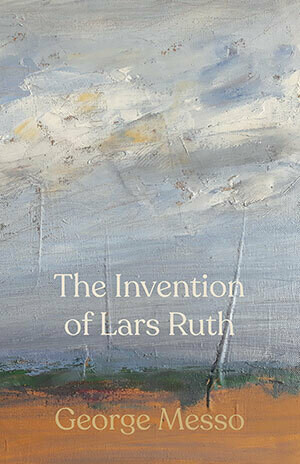The Invention of Lars Ruth
George Messo
(Shearsman Books, 2021); pbk £10.95
This poetry and short prose collection displays an obsession with memories: how they fade from us and what we lose when one forgets them. George Messo creates an overwhelming feeling of cold darkness in The Invention of Lars Ruth. The collection is separated into two sections, ‘The Invention of Lars Ruth’ and ‘Cuckoo Taiga’ and dispersed through the text are eerie sketches, like a scribble of a place someone is forgetting. These images add to the dimensionality of the world Messo builds; not only do we find ourselves in highly provocative settings through words, but we are also made to pay even closer attention through illustration.
Many of the poems are named after this seemingly all-knowing, benevolent character of Lars (‘Autumn Lars’, ‘Visioning Lars’) and are set in the depths of forests or around lakes. These are particularly atmospheric locations; his natural settings are incredibly immersive. In addition, Messo provides a character who almost acts as a guide, and often as the reader you feel as though you are walking through the trees or submerged under the water.
There is an existential consideration within the book too:
We sleep in meadows,
Darkness breaks out and surrounds us.
One ear pressed to the earth,
One to the cosmos.‘Siege of Lars’
The speaker, the person who Lars came to visit, seems to consider life and death somehow on both a cosmic and a ground level. This collective ‘we’ encompasses not only the narrator and Lars, but all of us—humanity—who are part of the universe below the vast cosmos. The isolated settings in the dark or by the rivers or lakes seem to create a sense of loneliness or even nostalgia for what one has lost; but in contrast with the use of ‘we’, ‘us’ and ‘you’, decidedly includes the reader and makes them a part of this study of life and death. There are many deaths memorialised in this book and it seems that we are invited to consider them as a part of the nature, the cycle, of life.
We sat
with morning in the roomuntil the grey walls turned blue
and the breath went out of him.No slowing down
or sudden exhalationof a dying wish. Just
my father, dead.‘A Dwelling Place for Lars’
The plain way that the poetry approaches loss and death creates a stark, cold mood. The darkness of decay and grief expressed through visual sensory description transcends the page and is not only bleak in its themes, but in its setting and imagery in a way that carries you as the reader into a stormy lake or a forest in the night. Here you begin to ponder the meaning of life from the depths of where Messo has placed you,
the foetus knows everything
said Lars[.]‘Oared’
There is repeated use of birth as an illustration of pure, natural life, like in ‘Oared’. There are several poems that focus on birth as essentially the next stage of this inevitable cycle. Eggs are effectively used as an imagery vehicle of this phase of life, as well as the foetus.
There were eggs and there was a bowl.
Something marvellous would soon begin.‘Three Eggs Lars’
One might expect, though, to read one section considering birth and the other death —the poems occasionally feel disorderly —but this has a logic on Messo’s part: communicating the unpredictability of death or change. It is a ‘wave you feel but never hear’.
Sometimes we cannot see it coming, sometimes it takes us by surprise… sometimes it happens just as a new, brilliant change occurs, and knocks you down into this dark lake again. But death is always untimely. It does not run on our time, and when it comes, it hits you hard, like the cold. All this, I believe, is illustrated in The Invention of Lars Ruth.
Somewhere
you too will have your grave.‘Lines at Palkovare’
Ella Ferguson


Leave a Reply